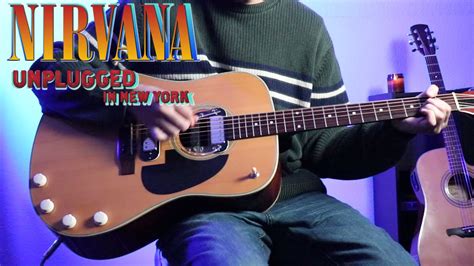Unlocking Nirvana's Sound: Cobain's Guitar Journey
Kurt Cobain's distinctive guitar sound, a raw and emotionally charged blend of grunge, punk, and alternative rock, is as iconic as his songwriting. It wasn't just about the music; it was about an attitude, a rebellion, and a vulnerability that resonated with a generation. Understanding Cobain's guitar journey reveals not just the technical aspects of his playing, but also the emotional core of Nirvana's music. This exploration dives deep into the instruments, techniques, and influences that shaped his legendary sound.
The Early Days: Shaping a Sonic Identity
Before the global phenomenon of Nirvana, Cobain's musical explorations were diverse. He wasn't initially a guitar virtuoso; rather, he developed his signature style through experimentation and a raw, almost unpolished approach. Early influences ranged from punk acts like the Black Flag and the Buzzcocks to the melodic sensibilities of bands like The Beatles. This eclectic mix shaped his unique sonic palette. His early guitars were often inexpensive and readily available, reflecting his punk rock ethos of anti-establishment and DIY spirit.
The Fender Mustang: A Grunge Icon
The Fender Mustang, perhaps his most recognizable instrument, became synonymous with Nirvana's sound. Its twangy, slightly distorted tones provided the perfect canvas for Cobain's songwriting. He favored the Mustang's single-coil pickups, which delivered a bright, slightly jangly sound, perfect for the punchy rhythms and melancholic melodies that defined Nirvana's music. The Mustang's affordability also made it relatable; it wasn't a high-end instrument, mirroring Cobain's anti-establishment image.
Beyond the Mustang: Exploring a Diverse Arsenal
While the Mustang is iconic, Cobain wasn't limited to a single guitar. He also played various other instruments including a 1960s Jaguar, a couple of Stratocasters, and even acoustic guitars, showcasing his adaptability and versatility. These different instruments allowed him to explore a wider range of tones and textures, enriching Nirvana’s musical landscape.
Amplification and Effects: The Sonic Palette
Cobain's sound wasn't solely defined by his guitars; his amplification and effects played a crucial role. He frequently used a combination of Fender Twin Reverbs and various Marshall amplifiers, often pushing them to the limits of their capabilities for a raw, overdriven sound. His effects pedal arsenal was relatively modest compared to some guitarists, but he expertly used what he had, such as a Boss DS-1 distortion pedal and various fuzz pedals, to create distinctive textures.
What pedals did Kurt Cobain use?
Kurt Cobain's pedalboard was relatively simple, yet highly effective in shaping his signature sound. He famously relied on a few key pedals, notably the Boss DS-1 Distortion, which provided a gritty, overdriven tone perfect for Nirvana's heavier songs. He also experimented with various fuzz pedals, creating a thick, almost chaotic sound on occasion. While his setup wasn't overly complex, his understanding of how to use these pedals effectively was crucial to his unique sound.
The Influence of Feedback and Distortion: A Raw Emotion
Cobain wasn't afraid to embrace feedback and distortion. These weren't mere technical imperfections; they were integral components of his sonic vocabulary, conveying the raw emotion and intensity present in Nirvana's music. This intentional use of distortion and feedback helped create a sonic landscape reflecting the angst and raw energy that characterized the grunge movement.
The Legacy of Cobain's Guitar Playing
Kurt Cobain's guitar playing transcended technical proficiency. It was about emotion, raw power, and an authenticity that resonated deeply with listeners. His influence on guitar players continues to be immense, inspiring generations of musicians to embrace experimentation, imperfection, and the power of emotional expression through their music. His unique approach to playing, combined with his songwriting genius, cemented his place as a true guitar legend. His legacy is not merely about the guitars he played, but the raw, honest emotion they helped him express.

